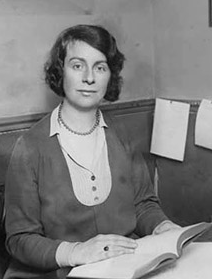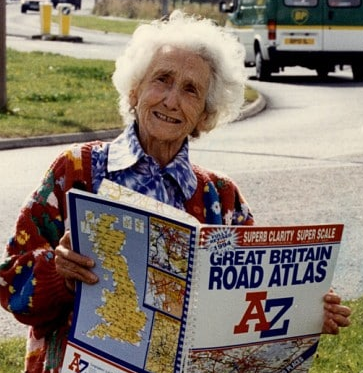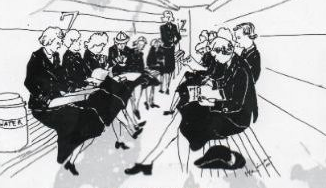Today’s blog post tells of a pioneering woman of the 20th century whose feminism took a very practical form. Caroline Haslett was born in 1895 in Sussex, where her father was a railway engineer. She grew up preferring to play with machinery rather than dolls. A bad back kept her from attending school regularly, and as a result she was considered not strong enough to ever lead a normal life and was advised to leave school as it would be a waste of time. But she worked on strengthening her spine and not only finished school, but also attended secretarial college. In her teens, she became a suffragette. Her first job was as a secretary with the Cochran Boiler Company in London in 1914, just as war was breaking out in Europe. The shortage of men gave Caroline her chance to learn about the engineering side of the company and by 1918 she moved to Cochran’s Scotland site. In 1919 she took the job of secretary with the Women’s Engineering Society (WES), which had been founded to ensure that the opportunities provided by the war for women to enter traditionally male professions were not lost. Caroline worked tirelessly to break down the prejudices of employers towards women in the workplace, and to ensure that women gained access to courses at universities and engineering institutions that had previously been open only to men. The society also provided career advice.
But Caroline wanted to help all women, not just those seeking careers. In the early 1920s, few houses had electric light or heating, and domestic appliances were rare. As a child Caroline had been horrified by her mother’s daily routine, later saying: ‘… and so the work of the house went on: sweeping, scrubbing, polishing and dusting, all done by hand. No wonder Mother got tired.’ She realised that the grueling burden of housework was causing women to become ill. In 1922 Caroline surveyed women to find which appliances would be most useful to them. The most popular answer was a dishwasher followed by a vacuum cleaner. Her survey led to her proposing an organisation to educate women about the uses of electricity and how to use electrical appliances in the home. The WES weren’t supportive so instead Caroline co-founded the Electrical Association for Women (EAW). The organisation’s slogan was ‘emancipation from drudgery’. Caroline is quoted as saying: ‘We are coming to an age when the spiritual and higher state of life will have freer development, and this is only possible when women are liberated from soul-destroying drudgery … I want every woman to have leisure to acquaint herself more profoundly with the topics of the day.’ As well as giving women careers advice, the EAW campaigned for safety awareness courses, as well as producing magazines and books such as ‘The Electrical Handbook for Women’. Women learned how to wire a plug and visited power stations to see how electricity was produced.
Caroline traveled widely to promote her mission, meeting Albert Einstein and Henry Ford. In the process, she became well known and was featured in a 1920s newspaper article entitled “Miss All-Alone”. Her independent lifestyle, flat-sharing in London and doing her own electrical wiring, was practically unheard of at the time.
During the Second World War, Caroline was the only woman member on a committee that investigated the standards for electrical installations in post-war Britain and instigated changes to the designs of electrical plugs to make them safer. From then onwards, Caroline presided over many committees, including becoming the first woman to chair a government working party and the first female chair of the British Electricity Development Association. Caroline’s achievements were recognised when she was made a Dame Commander of the British Empire in 1947. She died 10 years later, and her dying wish was that she be cremated by electricity.




